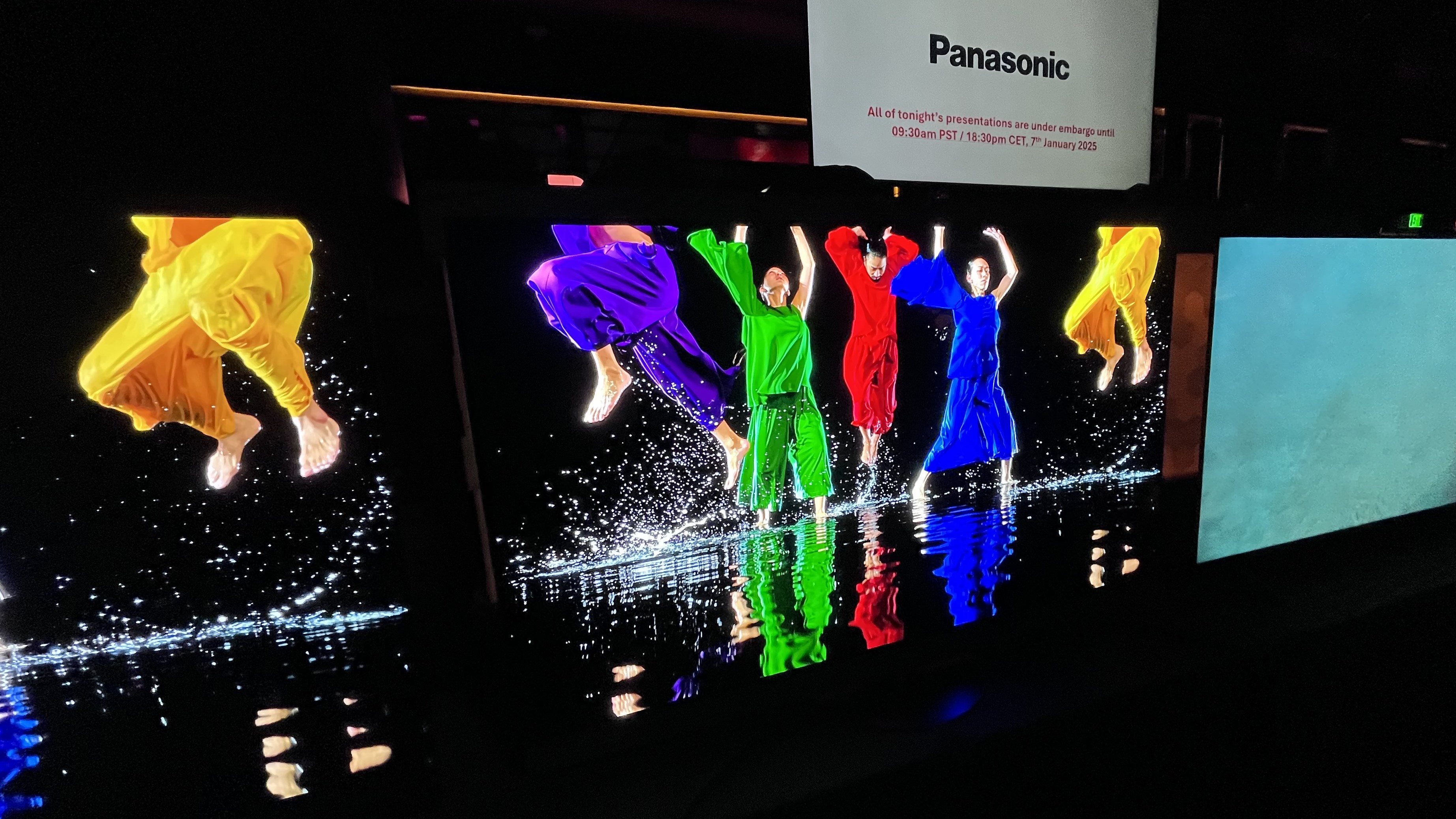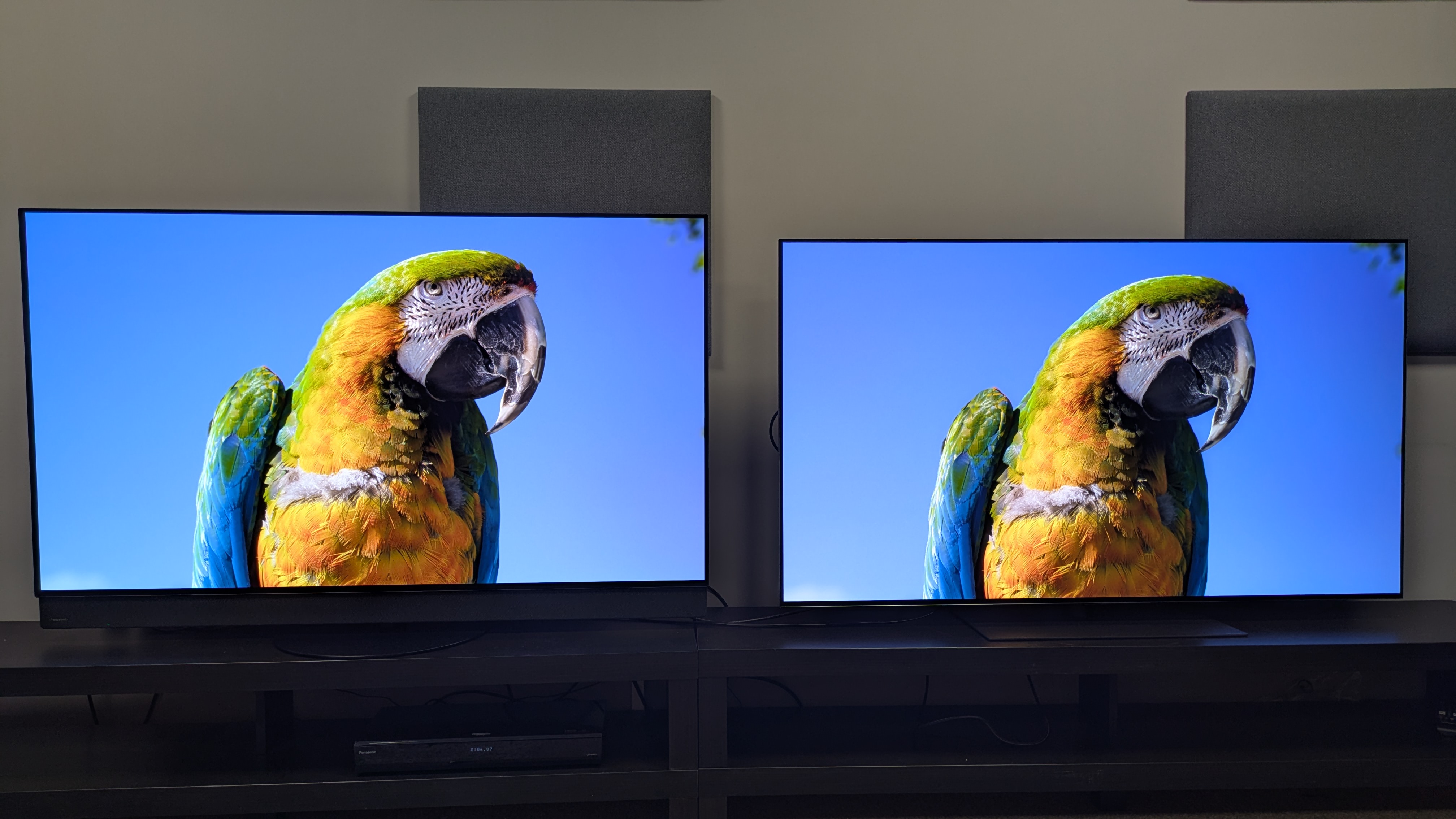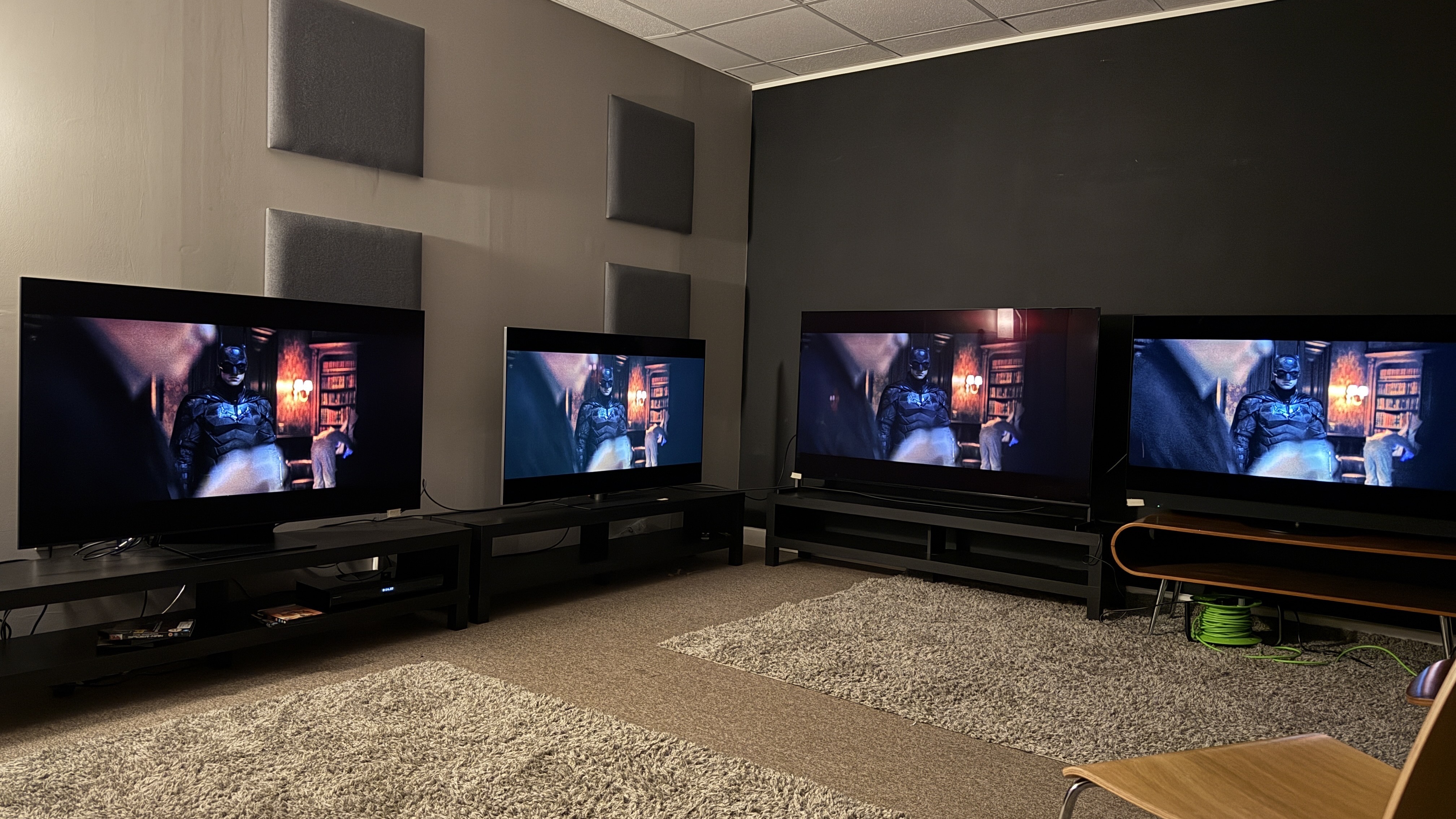I tested one of the brightest OLED TVs you can buy – but all that brightness comes with a catch
Filmmaker Mode hits its limits

I’m in the process of reviewing the new Panasonic Z95B OLED, and at first glance, it’s a very impressive TV, and one that takes OLED technology to the next level via its new Primary RGB Tandem structure OLED display panel.
A big advantage of the Z95B’s new OLED panel, which the company sources from LG, is enhanced brightness. The Z95B’s measured brightness is on the same level as the brightest examples of the best TVs, and it's also one of the brightest OLED TVs TechRadar has ever tested.
High brightness is one factor that contributes to the Z95B’s impressive picture. Unfortunately, you wouldn’t know Panasonic’s new flagship OLED held such powerful brightness reserves if you were to only use its Filmmaker Mode, a picture preset we generally recommend as providing the most accurate image quality on all manner of TVs, Panasonic models included.
By the numbers


The Z95B’s peak brightness in its default Filmmaker Mode is surprisingly low. And that’s with both standard dynamic range (SDR) and high dynamic range sources. Just how low? I’ll cite some numbers from my initial measurements of the Z95B.
On a 10% HDR white window pattern, the Z95B measured 992 nits, and 347 nits on a full-screen (100%) HDR white window pattern. Switching to standard dynamic range, the Z95B measured 78.8 nits on a 10% pattern, and 78 nits on a full-screen pattern.
To put those numbers in context, the LG G5, a TV that uses the same Primary RGB Tandem structure OLED display panel as the Z95B, managed 2,268 and 331 nits, respectively, on the same HDR brightness tests, and 327 and 286 nits, respectively, on the same SDR tests.
Hashing out those numbers, in Filmmaker Mode, the LG G5 delivers an HDR picture that’s more than twice as bright as the Panasonic Z95B, and the G5’s picture is four times as bright with SDR sources.
Sign up for breaking news, reviews, opinion, top tech deals, and more.
That’s a considerable difference, and it really shows when comparing the two TVs side by side, as my TechRadar colleague James Davidson did in his Panasonic and LG flagship OLED TV comparison. James set both TVs to their default Filmmaker Mode settings, and when viewing reference clips from 4K Blu-rays, he found the picture to be “far brighter and more vibrant on the G5, with much more brilliant whites and highlights.” The Z95B’s picture, in contrast, “looked very accurate, but dim in comparison.”
Another TV test TechRadar recently conducted similarly found the Panasonic Z95B at a brightness disadvantage compared to its flagship OLED TV competition. In our flagship OLED TV showdown, we compared 2025 models from Samsung, LG, Sony, and Panasonic.
In that test, the mostly non-expert panel was generally less impressed with the Z95B – and the Sony Bravia 8 II as well – with one panelist commenting, “Both Panasonic and Sony look super-dull,” compared to the Samsung S95F and LG G5 competition.
A brightness boost – but is it worth it?

In our recent Panasonic Z95B vs LG G5 OLED TV comparison, the Z95B’s Luminance (brightness) adjustment, which was set to 70 by default in Filmmaker Mode, ended up being boosted to its maximum 100 setting after the initial comparison. At this setting, the Z95B’s picture looked equally bright compared to the G5, but it was also observed that the brightness boost came at the expense of picture accuracy.
To confirm exactly how bright the Panasonic Z95B’s picture gets in Filmmaker Mode with its Luminance adjustment set to maximum, I conducted another round of measurements. In this case, the Z95B’s HDR peak brightness had climbed up to 2,240 nits – approximately the same level as the LG G5 in its default Filmmaker Mode settings.
Okay, so the Z95B can get equally as bright as the G5. But at what cost? As part of my second round of measurements, I compared the Z95B’s EOTF (the HDR equivalent of gamma) tracking in Filmmaker Mode with Luminance set to 70 (the default) and next to 100 (maximum).
With Luminance set to maximum, the Z95B’s EOTF tracking was notably less accurate, with higher Delta-E values (the margin of error between the test pattern source and what’s shown on-screen) across the full brightness range. The default 70 setting, in contrast, showed mostly accurate EOTF tracking and a considerably lower Delta-E values.
For me, those measurements confirm the loss of picture accuracy my colleague experienced when viewing the Z95B with its Luminance setting boosted to better match the G5.
Does that mean the Panasonic OLED’s picture doesn’t look good when running at maximum brightness? Not necessarily, and it’s entirely possible that the Z95B would have done better in TechRadar’s flagship OLED TV showdown with its Luminance setting boosted from the default.
However, the measurements do reveal the limitations that presets like Filmmaker Mode, which was created to provide viewers with a simple method for obtaining an accurate picture that matches what a movie’s director approved in the mastering suite, can bump up against in the new world of super-bright TVs.
Filmmaker Mode is something I’d still recommend using, but don’t expect your pricey new TV to be flexing its full brightness potential, and be prepared to dim the lights for movie time.
You might also like

Al Griffin has been writing about and reviewing A/V tech since the days LaserDiscs roamed the earth, and was previously the editor of Sound & Vision magazine.
When not reviewing the latest and greatest gear or watching movies at home, he can usually be found out and about on a bike.
You must confirm your public display name before commenting
Please logout and then login again, you will then be prompted to enter your display name.